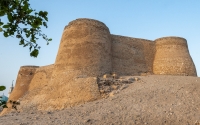
It is the Tarout Castle, situated northwest of al-Dirah district on Tarout Hill, at the heart of Tarout Island in al-Qatif, which is part of the Eastern Province. This castle is referenced in Portuguese historical documents. Following the collapse of the Mamluk state in Egypt, the Levant, and Hejaz in 1516, and with the Portuguese gaining control over certain ports in the Arabian Gulf, they eventually arrived at Tarout and renovated the castle in 1544. The castle consists of an irregularly shap...
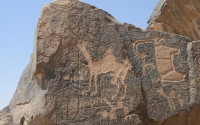
The phenomenon of rock art has emerged throughout human history, being the oldest human artifacts, found on mountain outcrops, caves, or rocky surfaces. These were found in places that were considered ancient human settlements. Among these is the rock art in Hail Province of the Kingdom of Saudi Arabia , which has been a global historical site since the nineteenth century. The arab ancestors left traces of their human experiences through drawings representing human and animal figures. It was re...
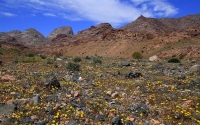
Jabal al-Lawz or Jibal al-Lawz is a mountain range located in Tabuk Province, Kingdom of Saudi Arabia, within the geographical boundaries of NEOM area. It rises to an elevation of 2,549 m above sea level and experiences snowfall almost every winter. It is named after the almond trees found in it. Tourism in Jibal al-Lawz Jibal al-Lawz are a distinctive tourist destination for hiking and adventure enthusiasts. Tourist activities are organized there during the winter season, including driving alo...
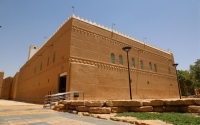
Al Murabba Historical Palace or King Abdulaziz Palace was the first palace built for King Abdulaziz Bin Abdulrahman Al Saud , the Founder of the Kingdom of Saudi Arabia . In 1938, the King moved to the palace thirty-six years following his stay in Riyadh , after he had lived in Qasr al-Hukm . The palace played a major role in the Saudi political scene. The first laws of the Kingdom saw the light of day within its premises. One of its units, the Political Division, formed the nucleus for the es...
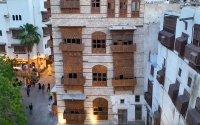
Historical Jeddah , or al-Balad , is a world cultural heritage site, a central archaeological, commercial, and tourist area, in downtown Jeddah on the western coast of the Kingdom of Saudi Arabia. It consists of the Jeddah neighborhoods within the old wall, gates, alleys, mosques, houses, markets, buildings, government headquarters, neighborhood empty areas between houses ( barha ), landmarks, public squares, personal museums, and ancient mosques. Historic Jeddah is one of six Saudi archaeologi...
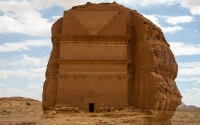
Hegra or Hijr is a World Heritage Site and a Saudi touristic and historic monument. It is located in AlUla governorate, affiliated with Madinah, northwest of the Kingdom of Saudi Arabia. Hegra, which was known for a long time as Mada’in Salih, consists of ruins that have combined various historical eras, including Nabataean, Lihyanite, and Islamic. Its most famous landmarks are the historical tombs carved on the facades of sandstone rocks. Hegra was one of the first Saudi sites to be regis...

The Oasis of Dawmat al-Jandal is one of the archaeological and historical sites, and the most prominent place in Dawmat al-Jandal in al-Jawf , northwest of the Kingdom of Saudi Arabia. It was listed in ISESCO’s Islamic World Heritage List in 2020. Heritage Contents of the Oasis The Oasis of Dawmat al-Jandal includes the most significant historical landmarks in al-Jawf , such as Marid Castle , Omar Bin al-Khattab Mosque, al-Dara’ district, the historical market of Dawmat al-Jandal, and al-Ja...
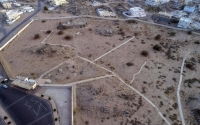
The site of the Battle of Badr is a historical location in the city of Badr, in the province of al-Madinah al-Munawwarah in the Kingdom of Saudi Arabia (150 km southwest of Al-Madinah Al-Munawwarah). The Battle of Badr took place there in 623. Landmarks of the site of the Battle of Badr The site of the Battle of Badr includes several landmarks associated with the Battle of Badr, including al-Arish Mosque, the battlefield, the cemetery of its martyrs, al-Adwa al-Dunya, and al-Adwa al-Quswa, as w...
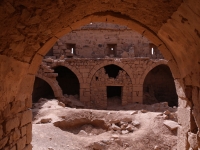
Al-Moadham is an archaeological site in Tabuk northwest of the Kingdom of Saudi Arabia . It flourished at the beginning of the 13th century, as one of the main houses on the Shami Hajj Route taken by many Shami pilgrims to reach holy places west of the Arabian peninsula. The historical importance of Al-Moadham The site became of high importance after al-Moadham King Sharaf ad-Din Isa al-Adil I Ibn Ayyub ordered the construction of a big lake on the site. Afterward, the lake rose to prominence, ...
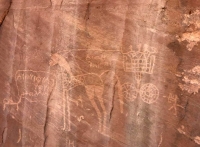
Taima' Hieroglyphic Inscription is an archeological inscription which dates back to the twelfth century B.C. It was discovered in 2010 in the governorate of Taima' in the region of Tabouk in the Kingdom of Saudi Arabia. It is the first inscription in the Arabian Peninsula on a fixed rock near the Taima' Oasis. It carries a royal signature 'double cartridge' of King Ramsis the 3rd, one of Egypt's Pharaoh kings, who ruled Egypt between 1192-1160 B.C. The Discovery of...
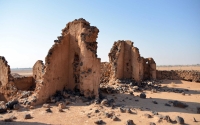
The Stations of the Basra-Makkah route in Qassim are archaeological sites in Qassim Province of the Kingdom of Saudi Arabia. These stations were built as rest stops for pilgrims traveling from the city of Basra in Iraq to Makkah al-Mukarramah. There are two main stations: An-Nabaj (currently al-Asyah) and Dariyah Station. More than sixteen primary and secondary stations have been recorded along the Basra-Makkah route that passes through Qassim Province. Stations of the Basra-Makkah route The Ba...
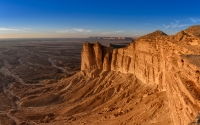
Tuwaiq Mountain is a mountain range that forms a narrow escarpment to the east of the Sarawat Mountains. It is located west of Riyadh in the center of the Kingdom of Saudi Arabia. Known as Tuwaiq Mountains, al-Arid Mountains, or Ared al-Yamama, it is one of the most important geographical and tourist attractions in the Kingdom. Tuwaiq Mountains extension Tuwaiq Mountains extend over eight hundred km, starting from Nafud al-Thuwairat in Zulfi Governorate, traversing through the regions of al-Was...